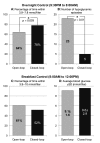Multinational study of subcutaneous model-predictive closed-loop control in type 1 diabetes mellitus: summary of the results
- PMID: 21129332
- PMCID: PMC3005047
- DOI: 10.1177/193229681000400611
Multinational study of subcutaneous model-predictive closed-loop control in type 1 diabetes mellitus: summary of the results
Abstract
Background: In 2008-2009, the first multinational study was completed comparing closed-loop control (artificial pancreas) to state-of-the-art open-loop therapy in adults with type 1 diabetes mellitus (T1DM).
Methods: The design of the control algorithm was done entirely in silico, i.e., using computer simulation experiments with N=300 synthetic "subjects" with T1DM instead of traditional animal trials. The clinical experiments recruited 20 adults with T1DM at the Universities of Virginia (11); Padova, Italy (6); and Montpellier, France (3). Open-loop and closed-loop admission was scheduled 3-4 weeks apart, continued for 22 h (14.5 h of which were in closed loop), and used a continuous glucose monitor and an insulin pump. The only difference between the two sessions was that insulin dosing was performed by the patient under a physician's supervision during open loop, whereas insulin dosing was performed by a control algorithm during closed loop.
Results: In silico design resulted in rapid (less than 6 months compared to years of animal trials) and cost-effective system development, testing, and regulatory approvals in the United States, Italy, and France. In the clinic, compared to open-loop, closed-loop control reduced nocturnal hypoglycemia (blood glucose below 3.9 mmol/liter) from 23 to 5 episodes (p<.01) and increased the amount of time spent overnight within the target range (3.9 to 7.8 mmol/liter) from 64% to 78% (p=.03).
Conclusions: In silico experiments can be used as viable alternatives to animal trials for the preclinical testing of insulin treatment strategies. Compared to open-loop treatment under identical conditions, closed-loop control improves the overnight regulation of diabetes.
© 2010 Diabetes Technology Society.
Figures


References
-
- Albisser AM, Leibel BS, Ewart TG, Davidovac Z, Botz CK, Zingg W. An artificial endocrine pancreas. Diabetes. 1974;23(5):389–396. - PubMed
-
- Santiago JV, Clemens AH, Clarke WL, Kipnis DM. Closed-loop and open-loop devices for blood glucose control in normal and diabetic subjects. Diabetes. 1979;28(1):71–84. - PubMed
-
- Parker RS, Doyle FJ, 3rd, Peppas NA. A model-based algorithm for blood glucose control in type I diabetic patients. IEEE Trans Biomed Eng. 1999;46(2):148–157. - PubMed
-
- Renard E. Implantable closed-loop glucose-sensing and insulin delivery: the future for insulin pump therapy. Curr Opin Pharmacol. 2002;2(6):708–716. - PubMed
-
- Bellazzi R, Nucci G, Cobelli C. The subcutaneous route to insulin-dependent diabetes therapy. IEEE Eng Med Biol Mag. 2001;20(1):54–64. - PubMed
Publication types
MeSH terms
Substances
Grants and funding
LinkOut - more resources
Full Text Sources
Other Literature Sources
Medical

